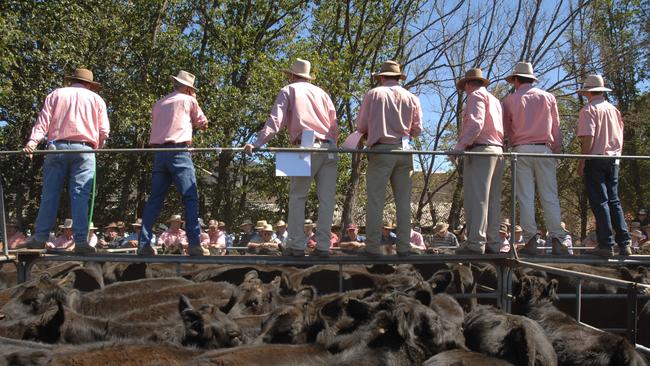Biosecurity levy: how much each farm sector will pay
DAFF has listed how much each farm sector will pay in biosecurity levies from July 1, but no detail on rates or collection. Use our table to see the rates for your sector.

Farmers have been left in the dark on how the Albanese Government is going to impose a new biosecurity protection levy on July 1, based on each rural sectors’ gross value of production.
The problem for many farmers is that their current research, marketing and animal health levies are based on a flat fee – per head of livestock, kilogram or tonne of production, which producers say is unrelated to GVP.
In the cattle industry producers currently pay a flat $5 a head, egg producers are levied at 15.27 cents per layer, almond growers 2.13 cents a kilogram of shelled nuts and orange growers $5.30 a tonne.
Cattle Australia chief Garry Edwards said “GVP will never link to the $5 per head transaction levy”, raising questions about how the Department of Agriculture, Fisheries and Forestry is going to structure the new biosecurity protection levy.
Even the timber industry pays a flat fee 13.5 cents per cubic metre, which is unrelated to the value of the wood, while in dairying farmers are paying a flat fee based on the kilograms of butterfat and protein they produce.
Cropping is one of the few sectors that already uses value-based levies.
Agriculture Minister Murray Watt has set a deadline of July 1 for the levy to come into effect, but peak bodies such as the National Farmers’ Federation and Cattle Australia say they’ve heard nothing on how it will be structured.
The NFF, which has been vocal in its opposition to the new levy, has called on DAFF to at least delay its implementation.
But DAFF has told farmers it is “committed to working with industry on the imposition and collection arrangements” and will be “consulting industry representative bodies with proposed BPL rates over coming weeks”.
In the meantime the only detail DAFF has released is a breakdown of how much each rural sector will pay in total towards the $52.8 million the government intends to collect in 2024-25.
DAFF has calculated each sectors contribution based on a rolling average of their share of total GVP over the years 2019-20 to 2021-22.
High livestock prices over recent years means DAFF has lumped cattle producers with a $9.3m contribution, while bumper harvests mean grain growers will have to stump up almost $12.2m.
Sheep and lamb producers contribution will be $3m, with dairy farmers contributing a similar amount.
TO SEE THE FULL LIST ON HOW MUCH EACH SECTOR WILL PAY CLICK HERE.
A small number of producers and processors in the highly concentrated chicken meat sector will have to pay $1.87m and the pig sector $1m.
The DAFF calculations expose some of the inequity in using a rolling average GVP.
In 2019-20 cotton growers GVP was just $250m on the back of drought. But good rains and then floods drove 2020-21 cotton GVP to $1.57 billion and then $4.2 billion in 2021-22.
DAFF has also copped criticism for its lack of consultation with industry groups who collect levies from farmers.
In their submission to the Senate inquiry into the levy, the Australian Livestock & Property Agents Association, whose members collect most of the existing livestock levies, said: “We are totally in the dark on the formulas to be used to deduct the levy at the point of transaction and how that amount will be reflected in the account.”



